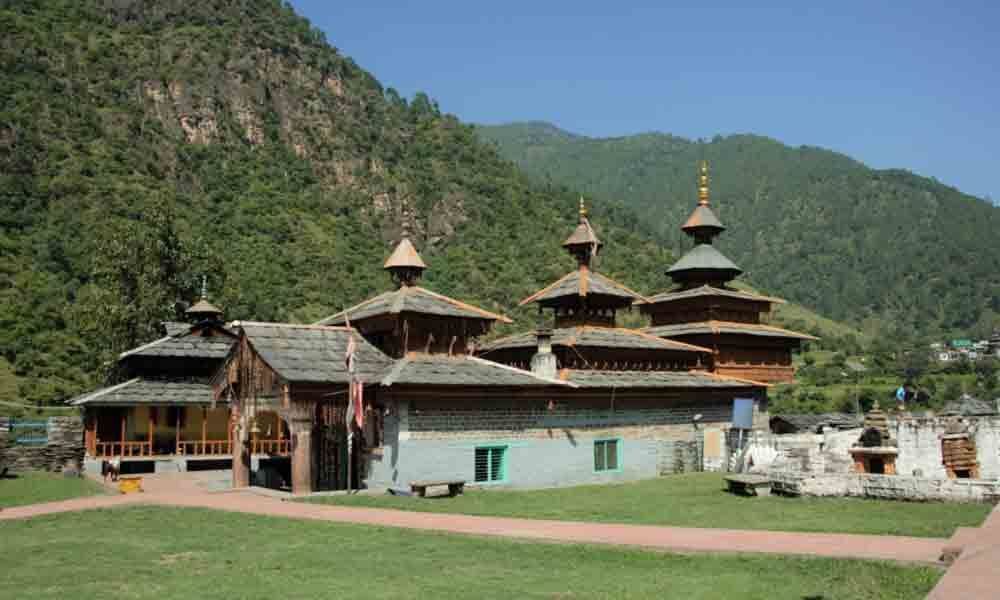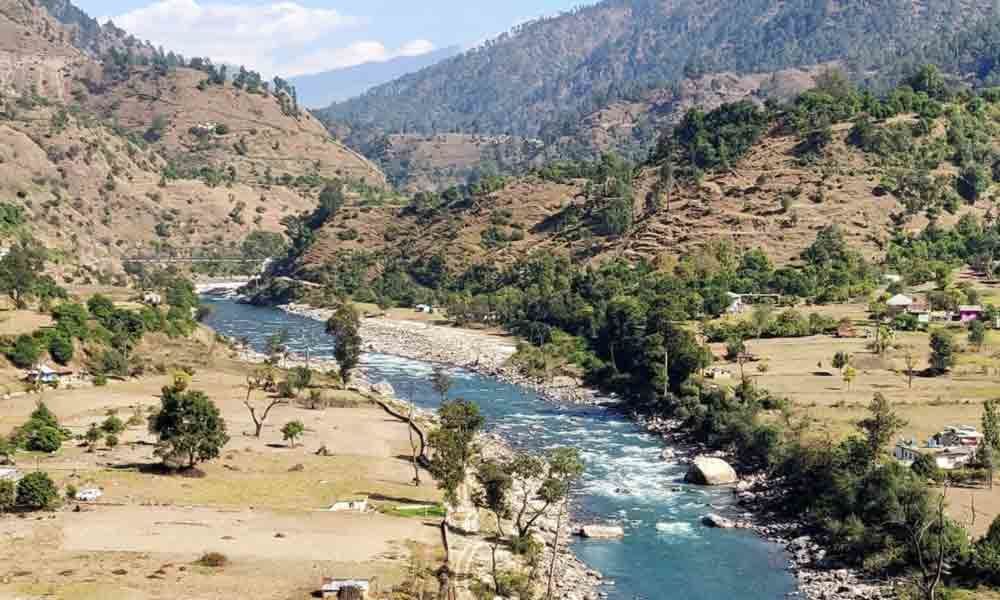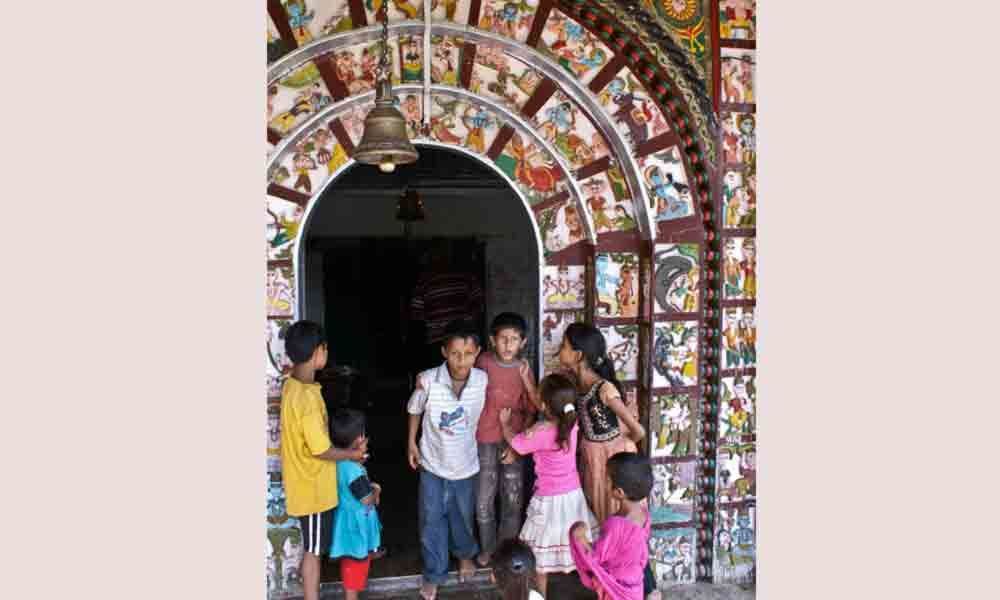Domain of divine
Hanol tucked in the interiors of Dehradun, Uttarakhand, is the seat of the Mahasu Devta temple and it is magical and mystic place…
The day had dawned bright and sunny. We were sipping hot tea in the open courtyard of the guest house overlooking the small settlement of Hanol. Only last evening we had the privilege of witnessing a 'jagar' (a traditional ceremony of spirit possession where the 'devta' or deity enters a human being and speaks through that person) in the village. It had been a mesmerising experience watching the villagers invoke the deity by narrating legends in the form of ballads and accompanied by folk music with the pulsating beating of the drums. The objective was to settle a crisis in a village home in which a young man was suffering from severe stomach infection and literally battling for his life. He had been taken to several big hospitals, but nothing had come out of the entire exercise. So, the family had finally resorted to the divine and invoked the 'devta'. The medium was Shanti Devi, a lady in her sunset years and highly respected for her 'sacrifices' and 'devotion'. Through her, the 'devta' had ordered the young man to drink the extracts of a particular plant. The instruction had been promptly executed last night itself and, in the morning, the young man was said to be feeling much better.
The manager's narration left us really intrigued.
The interiors of Uttarakhand still remain a place where spirits abound and mysticism is the order of the day, even in this 21st century. Be it the forests, rivers, hillocks or valleys, everything is worshipped as gods and goddesses and form the pivots of the social, religious and cultural lives of the people.
Hanol the seat of the Mahasu Devta temple is one such magical and mystic place.
The journey to Hanol was as mesmerising as the destination. The road for the last part ran alongside the Tons river, on the other side of which the land was carpeted with lush green forest and offered awesome views. Tons is also known as River Tamas (meaning short-tempered) as no water can be drawn from it for irrigation purposes, because of its precipitous banks and deep gorges.
The village Hanol was named after Huna Bhatt, a pious hearted Brahmin. Before Lord Mahasu arrived in the region, demons wandered over Uttrakhand devouring people and devastating villages. The greatest demon was Kirmir who had devoured all the seven sons of Huna Bhatt. The demon also cast an evil eye on Kirtaka wife of the Brahmin who prayed to Lord Shiva to protect her chastity. Lord Shiva assured her that all the demons troubling them will be killed shortly.
Huna Bhatt was told to perform certain rituals. On doing so the shakti or the Supreme force in the form of the Mahasu Devta along with his brothers and an entire army emerged from the ground and rid the people from the clutches of the demons. Since then Lord Mahasu Devta has been the ruler of the entire region with his main seat or capital at Hanol.
The present temple at Hanol is believed to have built in the 9th century by Pandavas after the Mahabharata war. It is considered as one of the most divine temples in all of Uttarakhand as well as adjoining Himachal Pradesh. Architecturally the temple is one of the rarest examples of a perfect and harmonious blend of stone and wooden structure to form one composite grand edifice. The sanctum proper is a pure stone shikhara in classical style. The whole wooden structure is covered with a high pitched slated pent roof surmounted by a two-tiered conical canopy over it on which a gracefully tapered kalash (pinnacle) stands. The roof edges are adorned with dangling fringes and bells which sway with the slightest movement of breeze.
In front of the sanctum is a large room called Bhandar where sacramental objects are stored. The gilded door of the Bhandar is profusely embossed with human and animal figures in a very ornamental manner depicting the episodes associated with the birth of Mahasu Devta.
Another interesting thing in the temple ground is a pair of spherical rocks about one foot in diameter, which are supposed to have been used by Bheem for playing and hence named as Marbles of Bheem. They are very heavy, and part of the fun is to try and lift them and throw them back. Belief has it that only the pious and pure-hearted can lift them!
On the premises of the temple, we noticed several goats roaming. It is believed that whatever one wishes in this temple, Mahasu Devta fulfils it, after which one has to bring a certain number of goats to the temple. After prayers, the goats are set free to roam on the premises.
In the entire region, Mahasu Devta is the sole arbiter over the. He exercises his authority over the religious dispensation of people and secular matters. Disputes among the people are brought to the court of Mahasu Devta and settled through a unique LotaPani method in which water is ritually filled in a metallic goblet in the name of Mahasu Devta by a neutral person. The disputants drink that holy water after which the party who has given the false statement is sure to fall sick.
Hanol offers a green and refreshing portrait of nature. Minuscule villages with homely wood cottages, terraced farms with tilled fields dot the terrain and imbibe a dreamy, picturesque feel to the entire place, the visuals of which linger on in the mind long after the trip is over.










